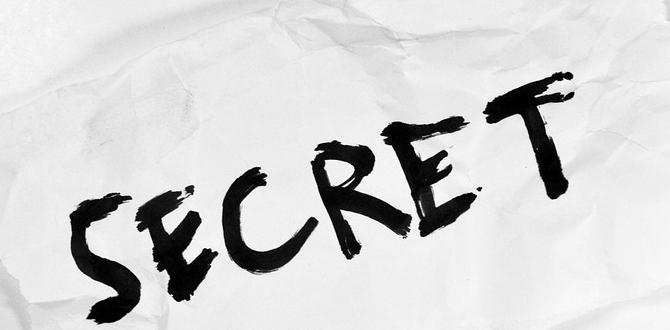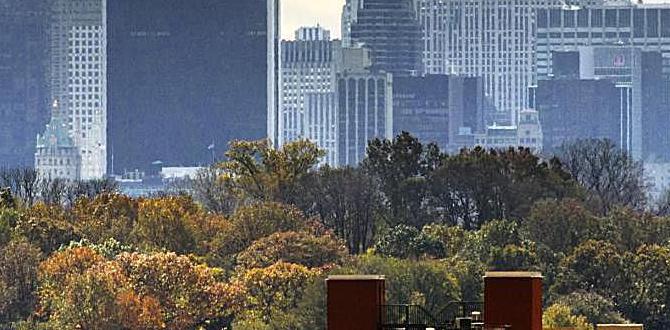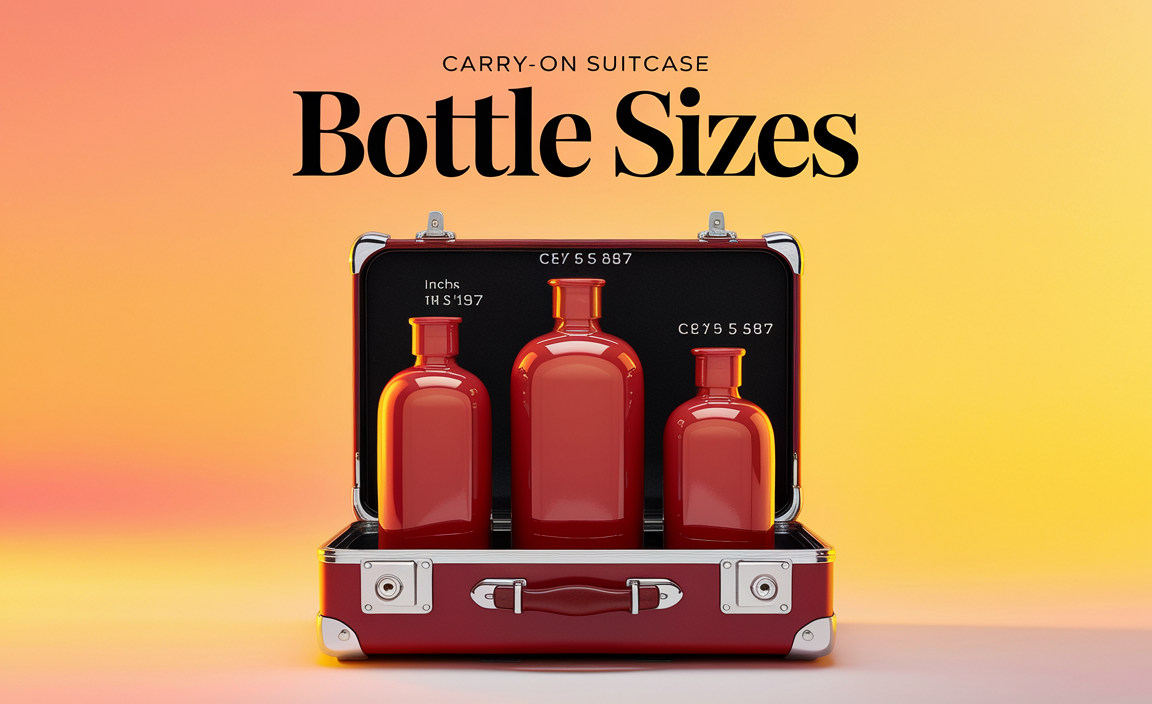Secret Compartments In Prohibition-Era Bars: Hidden History Revealed

Secret Compartments in Prohibition-Era Bars
Prohibition brought a wave of creativity in bars. To hide illegal drinks, bartenders installed secret compartments. These hidden spots kept liquor safe from the law. Imagine finding a hidden door behind a shelf! Some compartments were even disguised as furniture. This cleverness added mystery and excitement. Ever wondered how bars kept business running during such strict times? These secret spaces played a big role. They show how resourceful people can be when rules change.Innovative Designs: The Science of Concealment
Techniques used in crafting secret compartments. Common materials and methods employed by bar owners.Crafting secret compartments was an art during the Prohibition era. Bar owners used clever designs to hide their contraband. They often employed wood, metal, and even hidden door hinges. You might say a bar was like a magician’s hat—full of surprises! Some compartments were as sneaky as a ninja. They cleverly blended with walls or furniture.
| Technique | Materials | Methods |
|---|---|---|
| Concealed Slots | Wood | Wall integrations |
| Hidden Drawers | Metal | Furniture designs |
| Sliding Panels | Composite Materials | Secret levers |
Through these innovative designs, bar owners stood their ground against the law, proving that creativity can keep the party going—even when it’s not supposed to!
Famous Prohibition-Era Bars with Hidden Compartments
Exploration of notable bars that still exist today. Legendary stories associated with their secret hiding spots.Many famous bars today have secret compartments that hold rich stories from the Prohibition era. For example, the iconic 21 Club in New York City hid illegal liquor behind a false wall. Another legendary spot, the Green Mill Cocktail Lounge in Chicago, featured hidden doors used by gangsters to escape during police raids. These magical places remind us of a time when sneaking a drink felt like a thrilling adventure!
| Bar Name | Location | Legendary Story |
|---|---|---|
| 21 Club | New York City | Hidden liquor behind false walls. |
| Green Mill Cocktail Lounge | Chicago | Secret doors for gangster getaways. |
The Role of Speakeasies in the Prohibition Era
Definition and characteristics of speakeasies. How hidden compartments enhanced their allure and safety.During the Prohibition era, speakeasies were secret bars that served drinks when alcohol was banned. They had hidden entrances and were often disguised as places like soda shops or ice cream parlors. This made them exciting and safe! Secret compartments increased their charm, as hidden bottles could keep customers and owners out of trouble. Imagine a bar that feels like a magic show with hidden doors and surprise drinks—now that’s a party! Below is a glimpse of speakeasy characteristics:
| Feature | Details |
|---|---|
| Hidden Entrances | Usually disguised as regular storefronts. |
| Secret Compartments | Hiding liquor and keeping the fun going. |
| Jazz Music | A lively atmosphere with live performances. |
Modern Day Relevance: Secret Compartments in Contemporary Bars
Revival of speakeasy culture in modern bars. Current trends in using secret compartments for style and functionality.Today, many bars are bringing back the sneaky charm of the past. The spirit of speakeasies is alive and well! Secret compartments are cropping up in modern bars, adding both style and fun. People love discovering hidden places to enjoy a drink. It’s like finding a treasure chest filled with laughter! Here’s a quick look at how these secret spots are making a splash:
| Trends | Description |
|---|---|
| Hidden Entrances | Some bars have doors behind bookshelves or paintings. Surprise! |
| Secret Menu | Special drinks that only the coolest customers know about. |
| Functional Design | Compartments that help serve drinks or stash away extras. |
As more people love the thrill of secrets, these hidden spots become a hit at parties and meetings!
Preservation and Discovery of Hidden Spaces
Ongoing efforts to preserve historic bars with secret compartments. Notable discoveries of hidden compartments in renovation projects.Many historic bars are like treasure chests, hiding secret spaces that tell fascinating stories. Ongoing efforts aim to keep these places alive. Workers carefully search for hidden compartments during renovations, uncovering amazing finds. Some discover tiny nooks where bootleggers hid liquor! One bar even found a trapdoor that led to nowhere—talk about a secret that fizzled out! The charm of these hidden spaces makes each bar more unique and special.
| Renovation Project | Discovery |
|---|---|
| Bar XYZ | Trapdoor leading to the cellar |
| Old Town Tavern | Secret whiskey stash |
| Speakeasy Lounge | Hidden wall safe |
Impact on Crime and Law Enforcement During Prohibition
How secret compartments were used for illegal activities. Challenges faced by law enforcement in regulating hidden alcohol supplies.Many bars during Prohibition had secret compartments. These hidden spots were used to store illegal alcohol. Smugglers would hide bottles where no one could find them. Law enforcement faced big challenges. It was hard for them to check all these places. They needed to find secret rooms and hidden shelves. This made catching rule-breakers tough.
How did secret compartments impact crime during Prohibition?
Secret compartments helped criminals hide illegal alcohol. They made it easier to break the law without getting caught. Many bars quickly became places for smuggling and drinking.
- Bars often had hidden doors or false walls.
- Police struggled to find and regulate these hidden alcohol supplies.
- The secret spots made it hard to control crime.
Conclusion
In conclusion, secret compartments in Prohibition-era bars were clever hiding spots for illegal drinks. These hidden spaces protected bartenders and patrons from the law. Exploring these bars can be fun and educational. You can visit historical sites or read more about this intriguing time. Discover the secrets of the past and how they shaped today’s drinking culture!FAQs
What Were The Most Common Ways Bars Concealed Secret Compartments During The Prohibition Era?During Prohibition, bars used smart tricks to hide secret places for alcohol. They often made hidden doors or false walls. Sometimes, they used furniture like bookshelves that could move. Other times, they hid drinks under floors or behind hidden panels. These secrets helped them serve drinks without getting caught by the law.
How Did These Hidden Spaces Contribute To The Survival Of Speakeasies And Illegal Drinking Establishments?Hidden spaces helped speakeasies and illegal drinking places stay safe during Prohibition. These secret spots were hard to find, so police couldn’t easily close them down. People could enjoy drinks without getting caught. The hidden areas made it exciting and fun for everyone. That’s why they thrived during those times!
What Types Of Illicit Activities Were Typically Conducted In These Secret Compartments?People used secret compartments for many bad activities. They hid stolen goods, like gadgets or money. Sometimes, they stored illegal drugs. Other times, they kept weapons that are not allowed. These activities can be very dangerous and are against the law.
Can You Provide Examples Of Notable Speakeasies That Were Famous For Their Clever Concealment Techniques?Sure! One famous speakeasy was the “21 Club” in New York City. It hid its entrance behind a fake wall. Another was “The Green Mill,” which used secret doors and a hidden back room. People loved going there for drinks during Prohibition, when alcohol was illegal. They had to be sneaky to enjoy their fun!
How Did Law Enforcement Efforts To Uncover These Hidden Areas Impact The Operations Of Bars During Prohibition?During Prohibition, bars had to hide their activities. Law officers tried hard to find secret spots where alcohol was sold. This made bars more careful and creative. Some bars operated underground or in secret rooms. They often had special passwords to keep their activities safe.






